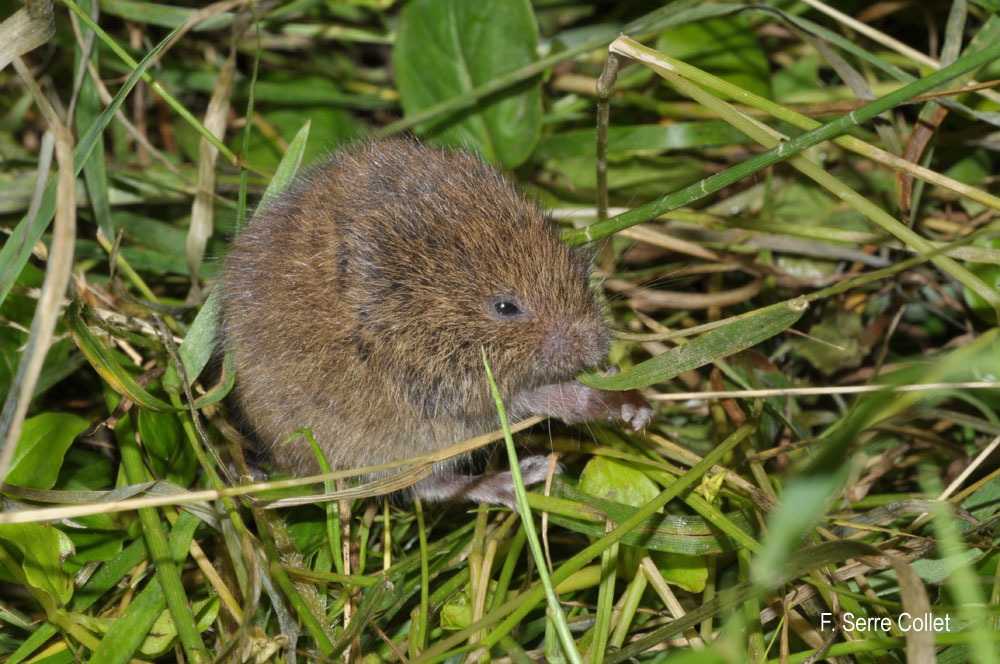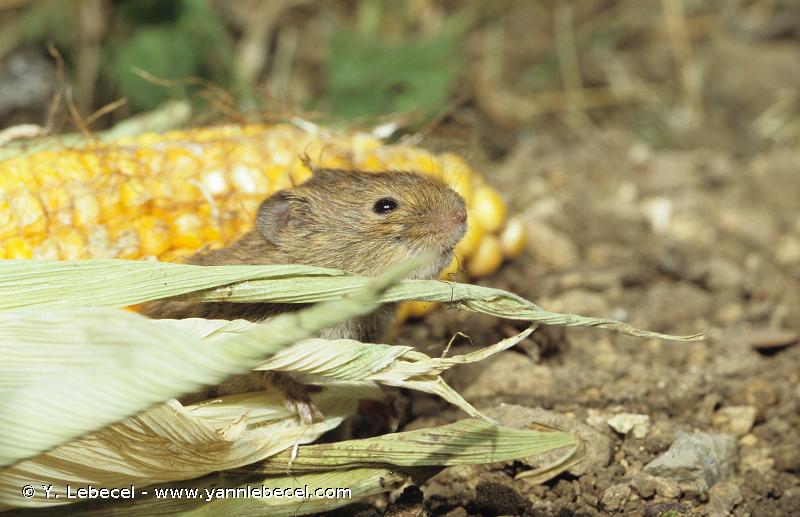
cd_nom

| Author : F. Serre Collet |
 |
To get the picture, please visit:
Françoise SERRE COLLET
Muséum national d'Histoire naturelle - Département des milieux et peuplements aquatiques
43 rue Buffon
75 005 PARIS
email : francoise.collet@mnhn.fr
Despite the Creative Commons license, please inform the author of the use which will be made of his photo

| Author : Y. Lebecel - www.yannlebecel.com |
 |
To get the picture, please visit:
Yann Lebecel
http://www.yannlebecel.com
email : inpn@mnhn.fr
Any reuse of one or more photographs on this site is subject to an authorization request from the author.
Link to the Code of Intellectual Property (Legifrance)
Longueur : 8,2-12,2 cm plus 2,3 à 3,9 cm de queue. Poids : 14-50 g. Dents (16): I1/1, C0/0, P0/0, M3/3.Le corps est assez trapu. Le museau est peu allongé et plutôt arrondi à son extrémité, les oreilles sont courtes et dépassent à peine du pelage, la queue est courte. Les yeux sont petits. Les pieds postérieurs ont 6 pelotes plantaires. Le pelage dorsal, lisse, est gris beige. Le pelage ventral est plus clair, sans démarcation nette avec la couleur dorsale. La queue est uniformément gris beige.
On peut le confondre avec le Campagnol agreste. Le pelage dorsal de ce dernier est plus foncé, plus désordonné, l'intérieur du pavillon de son oreille est plus poilu et sa queue est nettement bicolore.Le Campagnol des champs est presque aussi actif de jour que de nuit. Il creuse un réseau dense de galeries dans lequel il passe une bonne partie de son temps, même lorsqu'il est actif. Il y construit un nid sphérique avec de l'herbe sèche. Il peut avoir jusqu'à 10 périodes d'activité en 24 heures alternées de phases de repos. La reproduction débute en hivers et se termine en général en automne. Toutefois, si les conditions météorologiques le permettent, celle-ci peut se prolonger tout l'hivers. La maturité sexuelle est atteinte à l'âge de 3 semaines chez les femelles. Le nombre de petits par portée est compris entre 2 et 11 individus (5 en moyenne). La femelle peut mettre bas jusqu'à 6 portées dans l'année. Le Campagnol des champs est connu pour ses fluctuations cycliques qui conduisent à des phases de pullulation (plusieurs milliers d'individus par hectare). Il vit de un à deux ans.Son régime alimentaire est avant tout végétarien (herbes, parties vertes de plantes, graines, racines). Le Campagnol des Champs préfère les paysages ouverts avec un sol profond et couverts d'une végétation peu élevée non ligneuse, parsemés éventuellement de quelques buissons. Il affectionne particulièrement les prairies. Les labours lui sont défavorables.Références :
AULAGNIER S., HAFFNER P., MITCHELL-JONES A.J., MOUTOU F. & ZIMA J. 2008. Guide des mammifères d'Europe, d'Afrique du Nord et du Proche Orient. Delachaux et Niestlé, Paris. 271 p.
QUÉRÉ J.-P. et LE LOUARN H. 2011. Les rongeurs de France. Éditions Quae, Versailles. 311 p.
Patrick Haffner(UMS 2006 Patrimoine Naturel (AFB / CNRS / MNHN)),2014
Continental
Metropolitan France
Overseas
Marine
Metropolitan France
Overseas
The map presents a summary at the 10 x 10 km grid of the observation data for the species transmitted to the SINP. These data have been subjected to validation filters.
The map presents a reference distribution layer of the species at the scale of departments and marine sectors. The presence and absence data were established by expertise within a network of partners. This reference distribution is used in the validation process of the SINP data at the INPN level.
Corresponds to a report on the basis of at least one observation proved within a period of 10 years (20 years for little-known invertebrates) preceding the year and no presumption of extinction since obtaining the last data nor doubt on reproductive and implemented nature of this population. For migratory species, the presence indicated concerns areas of reproduction.
This status is based on one or more of the following criteria:
This point covers the absence, more difficult by nature to demonstrate than presence. This status is based on one or more of the following criteria:
This status must be assigned to a department in which the presence of the species is casual.
Particular case of absence due to a proven extinction less than a half century ago (older disappearances are treated as "no probable or definite").
In the state of knowledge, we can not comment on the presence or absence in the current department. This is the default status when not comprised in one of the previous categories or whenever there is doubt.
The map shows the global distribution of the species based on GBIF data (Global Biodiversity Information Facility).
